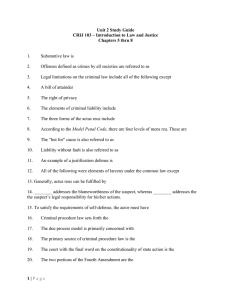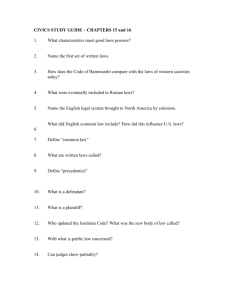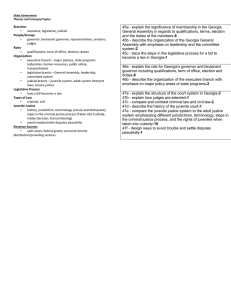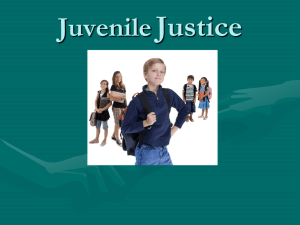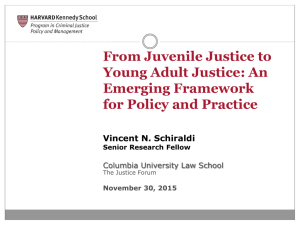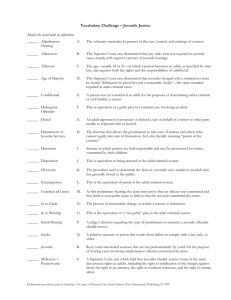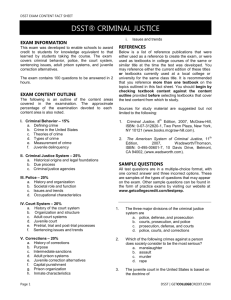CJC 111: Intro to Criminal Justice Course Description
advertisement
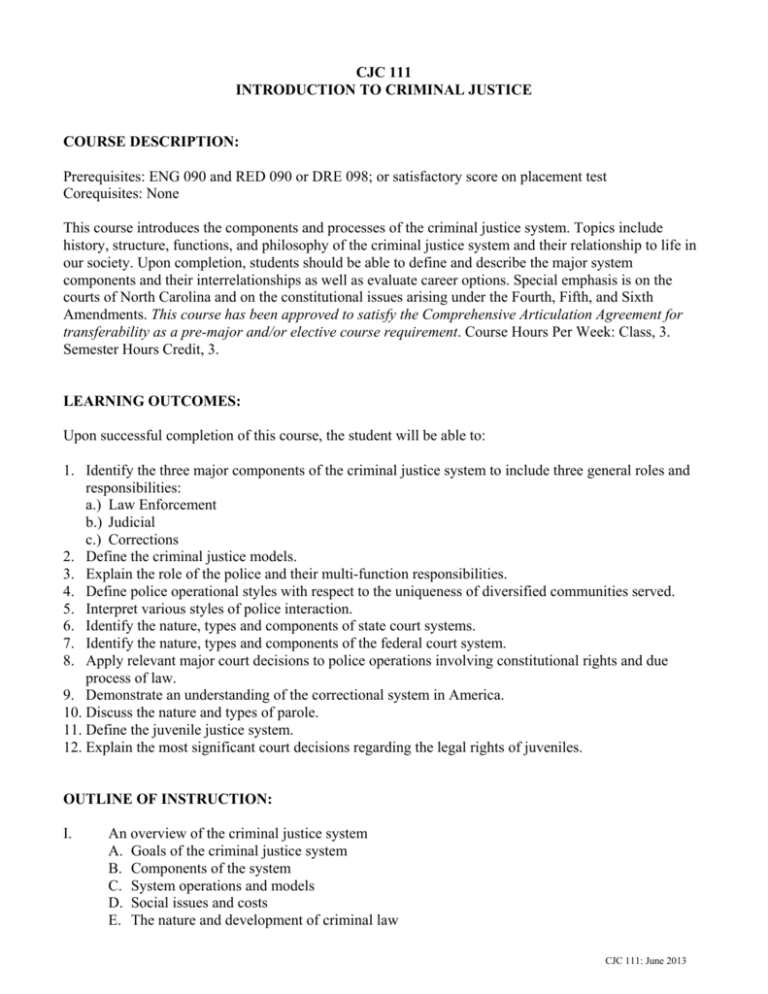
CJC 111 INTRODUCTION TO CRIMINAL JUSTICE COURSE DESCRIPTION: Prerequisites: ENG 090 and RED 090 or DRE 098; or satisfactory score on placement test Corequisites: None This course introduces the components and processes of the criminal justice system. Topics include history, structure, functions, and philosophy of the criminal justice system and their relationship to life in our society. Upon completion, students should be able to define and describe the major system components and their interrelationships as well as evaluate career options. Special emphasis is on the courts of North Carolina and on the constitutional issues arising under the Fourth, Fifth, and Sixth Amendments. This course has been approved to satisfy the Comprehensive Articulation Agreement for transferability as a pre-major and/or elective course requirement. Course Hours Per Week: Class, 3. Semester Hours Credit, 3. LEARNING OUTCOMES: Upon successful completion of this course, the student will be able to: 1. Identify the three major components of the criminal justice system to include three general roles and responsibilities: a.) Law Enforcement b.) Judicial c.) Corrections 2. Define the criminal justice models. 3. Explain the role of the police and their multi-function responsibilities. 4. Define police operational styles with respect to the uniqueness of diversified communities served. 5. Interpret various styles of police interaction. 6. Identify the nature, types and components of state court systems. 7. Identify the nature, types and components of the federal court system. 8. Apply relevant major court decisions to police operations involving constitutional rights and due process of law. 9. Demonstrate an understanding of the correctional system in America. 10. Discuss the nature and types of parole. 11. Define the juvenile justice system. 12. Explain the most significant court decisions regarding the legal rights of juveniles. OUTLINE OF INSTRUCTION: I. An overview of the criminal justice system A. Goals of the criminal justice system B. Components of the system C. System operations and models D. Social issues and costs E. The nature and development of criminal law CJC 111: June 2013 II. Crime in America A. Issues B. Trends C. Measurement D. Victimization III. Law enforcement A. Local, state, and federal law enforcement agencies B. The police role, functions, and operations C. Issues and trends IV. The role of the court A. The development, role and structure of America’s courts B. Major actors in the courtroom C. Pretrial, trial, and post-trial process D. Issues and trends V. Corrections A. A historical perspective B. America’s jail system C. Prison systems and programs D. Probation, intermediate sanctions, and parole E. Issues and trends VI. The juvenile system A. Long-term crime and arrest rates for juveniles B. Origins of the juvenile justice system C. Modern juvenile court process and procedural safeguards D. Juvenile institutions and delinquency diversion programs E. Juvenile justice changes and reforms STATEMENT FOR STUDENTS WITH DISABILITIES: Students who require academic accommodations due to any physical, psychological, or learning disability are encouraged to request assistance from a disability services counselor within the first two weeks of class. Likewise, students who potentially require emergency medical attention due to any chronic health condition are encouraged to disclose this information to a disability services counselor within the first two weeks of class. Counselors can be contacted by calling 919-536-7207, ext. 1413 or by visiting the Student Development Office in the Phail Wynn Jr. Student Services Center, room 1209. CJC 111: June 2013
